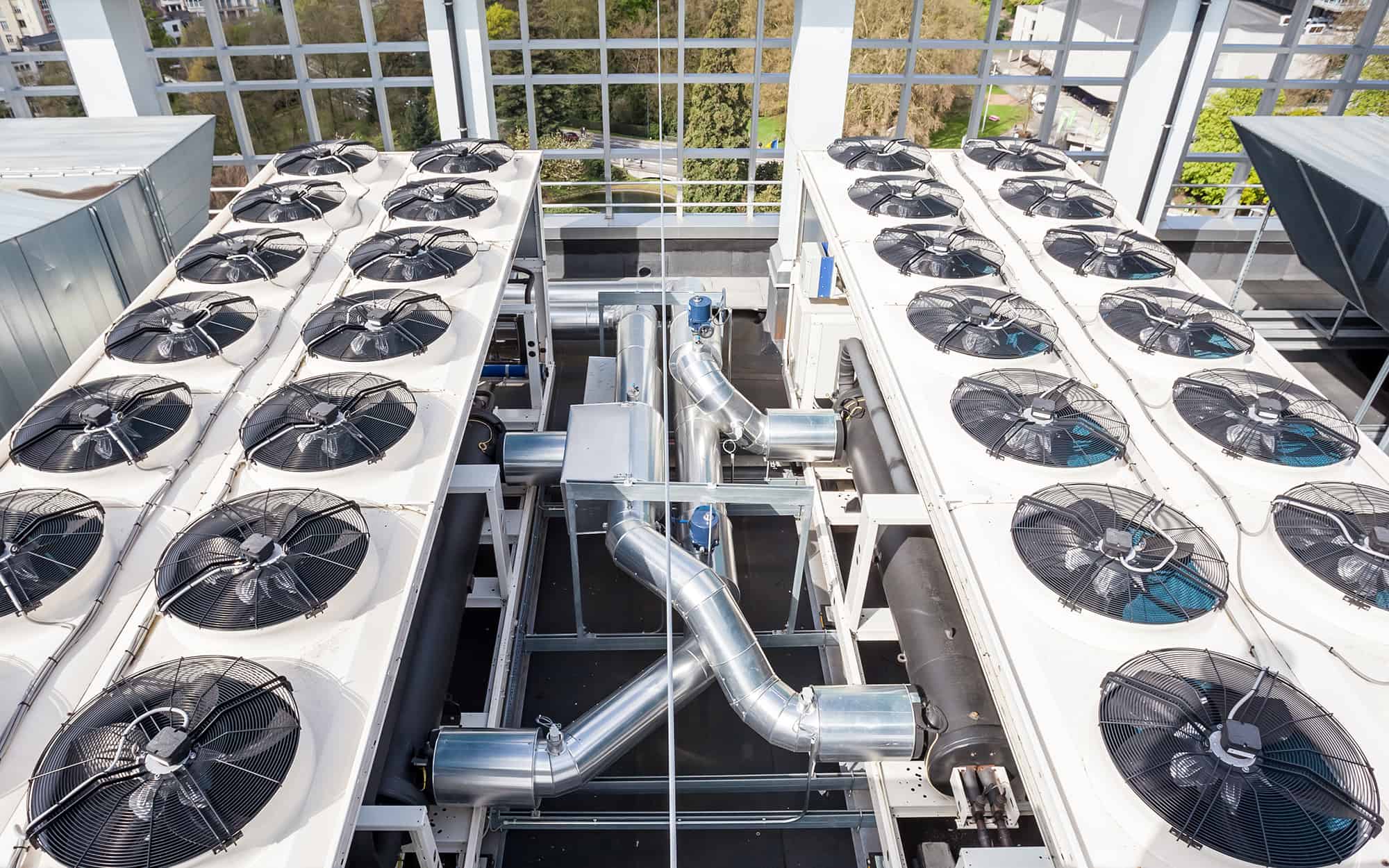
High-rise buildings are a great way to maximize square footage in densely packed cities like New York. However, figuring out how to maintain a comfortable temperature on each floor of a towering building can be challenging. Learn the pros and cons of different types of HVAC systems for commercial buildings and decide which option is right for you.
Understanding HVAC System Design for High-Rise Buildings
In commercial buildings, HVAC systems heat, cool, and ventilate each floor, either through a central system or separate units. Without them, your high-rise building would be freezing in the winter, hot and humid in the summer, and inconsistent from floor to floor. Because temperatures drop in high altitudes, the outside temperature on a skyscraper’s ground floor is higher than on the top floor. Commercial HVAC systems combat temperature variations and ensure good air quality.
The heating component in an HVAC system pulls air through water, gas, or electric heating components, resulting in a stream of warm air. Air conditioners do the opposite; they lower air temperature by pulling it through refrigerant coils. Heating and cooling systems need a ventilation component to filter out mold, pollen, dust, excess moisture, bacteria, and carbon dioxide.
Types of High-Rise HVAC Systems
There are many different types of commercial HVAC systems, and each has its benefits and drawbacks. When deciding on the right option for your building, consider its height, size, and usage. Larger, taller buildings require stronger systems to combat fluctuating outdoor temperatures. Residential buildings need zoned systems so tenants can control the temperature of their units.
The three main categories that commercial HVAC systems fall into are single-split, multi-split, and variable refrigerant flow (VRF) systems.
Single-Split System
If you need an HVAC system for a small commercial building, single-split systems are an affordable option. They heat and cool individual rooms instead of using a central system for the entire building. Single-split systems are cheaper than centralized systems, and they allow tenants to control the temperature in their own space. Plus, if one unit in the building breaks down, it won’t negatively affect other units.
The main drawback to single-split systems is the amount of space they require—each system needs its own indoor and outdoor unit. If you have limited space around your building, single-split systems aren’t ideal.
Multi-Split System
If you’re looking for an energy-efficient HVAC system that requires less outdoor space than a single-split system, multi-split systems are a great option. These systems work like single-split systems, except multiple indoor units connect to one outdoor unit to save space. Multi-split systems also save energy by detecting small temperature changes and making minor adjustments accordingly.
Though multi-split systems use less outdoor space, they require more extensive pipework. As a result, they are more expensive to install. Plus, if an outdoor unit breaks down, it affects multiple units instead of just one.
Variable Refrigerant Flow (VRF) System
Though single- and multi-split systems are cost-effective HVAC types, they don’t work well in large commercial spaces. VRF systems are easy to install, efficient, and reliable. Heat pump VRF systems are ideal for large buildings with open floor plans because they can provide heating or cooling to large areas. Heat recovery systems work well for buildings with smaller zoned areas because they can heat and cool separate spaces simultaneously.
VRF systems have higher upfront costs than split systems, and they need to be installed by HVAC specialists who understand the system’s intricacies. However, in the long run, VRF systems save money on monthly energy costs.
Choose React for HVAC Systems and Service Ducts in High-Rise Buildings
React Industries has been providing HVAC solutions to New York City and surrounding areas since 1983. Over the years, we’ve learned how to provide the most affordable and reliable HVAC systems for the buildings that shape our skyline. Whether you need HVAC piping and ductwork maintenance, improved indoor air quality, or you’re ready to install a new VRF system, React has you covered.
Our team of mechanical contractors and technical staff know the ins and outs of high-rise building classes, and we can help you determine the best HVAC system to fit your commercial building. If you’re embarking on a new high-rise build, we offer pre-construction planning services to optimize your mechanical systems and fit your budget. Contact us today to learn more about our HVAC planning, installation, maintenance, and emergency services.